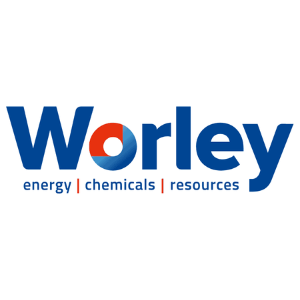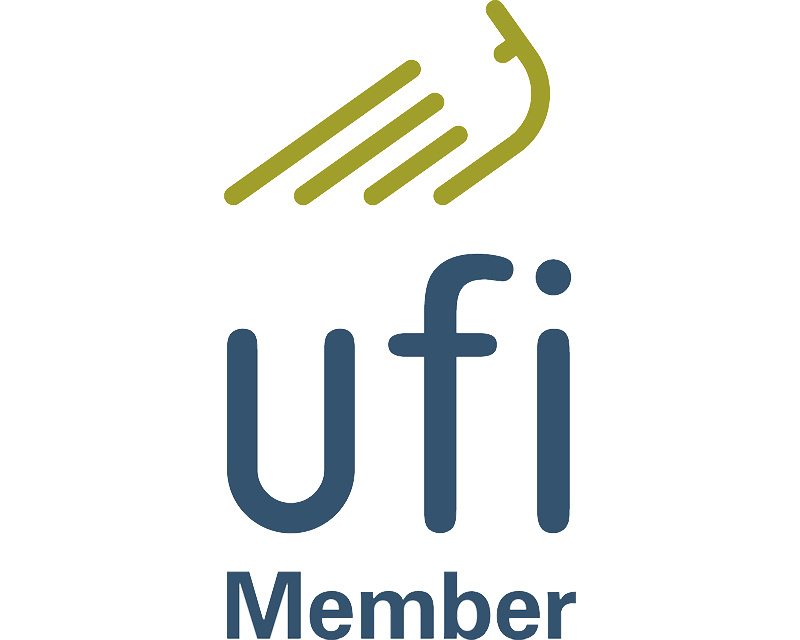- 10 30 AM
CCUS Technology Adoption: The View from a Service Company
Since the first amine-based CO2 capture process deployment on a coal-based boiler in a chemical plant in Trona, Los Angeles in 1978, the capture technology innovation has steadily grown. The innova...
Knowledge Partner : Worley
 Exhibition Floor
Exhibition Floor 10:30 AM - 11:15 AM
10:30 AM - 11:15 AM
CCUS Technology Adoption: The View from a Service Company
 10:30 AM - 11:15 AM
10:30 AM - 11:15 AM Exhibition Floor
Exhibition Floor
Since the first amine-based CO2 capture process deployment on a coal-based boiler in a chemical plant in Trona, Los Angeles in 1978, the capture technology innovation has steadily grown. The innovation is further accelerating to address the current technical, environmental and economic challenges with existing technologies (e.g., cost, market drivers, application in remote areas, scale of operation). Emerging technologies have taken innovative approaches to either develop novel CO2 capture processes or improve energy performance of CO2 recovery processes. Innovation boundaries stretch all the way to better measurement and monitoring of CO2 storage and further development of technology pathways for converting CO2 to value added products. Even with high technology readiness levels, most of these technologies are not commercial ready. Our studies to identify and evaluate hundreds of emerging CCUS solutions for varied levels of maturity (technical, commercial and system integration readiness level) and for a variety of different applications have found that diffusion of such emerging technologies into markets can be influenced by the results of 3rd-party analysis that is typically performed by service companies. Investment readiness analysis, feasibility analysis for potential integration in existing facilities or for greenfield applications, technical readiness level for leveraging government funds, commercial readiness level, and the ability for engineers to adjust and adopt the change are examples of such professional analysis. This paper presents the role of service companies as an integrator to support evaluation and implementation of innovative technologies across the CCUS supply chain. From the service company perspective, the area of Technology adoption specifically in the energy space is not always readily achieved. The phrases “race to be second” or “fast follow” are still commonplace. It is however worth clarifying what Technology means as for some it can mean systems & processes, new products & services or a combination of both. Technology, in our view, is not just about the deployment and adoption of a single element. We must not forget about the human factor involved in Technology adoption. As a service company, our people are people and not assets. Any new technology be it a system, process, product or offering has people at the centre of its development and deployment. We will be successful only if our people can fully foster and adopt the new technology. We must not lose sight either that at the centre of the thinking is the balance of safety and risk due to the nature of the energy and resources sector and application of new technologies. This is particularly key given the sustainability journey underway with many First of a Kind (FOAK) technologies being implemented and considered to support carbon capture.
- 11 30 AM
CMC's Playground of Innovation and Research
There is a rising demand for tangible change, and Carbon Management Canada (CMC) is proud to be a part of the solution. CMC’s Newell County facility is home to a variety of tests and technologies,...
Knowledge Partner : Worley
 Exhibition Floor
Exhibition Floor 11:30 AM - 12:15 PM
11:30 AM - 12:15 PM
CMC's Playground of Innovation and Research
 11:30 AM - 12:15 PM
11:30 AM - 12:15 PM Exhibition Floor
Exhibition Floor
There is a rising demand for tangible change, and Carbon Management Canada (CMC) is proud to be a part of the solution. CMC’s Newell County facility is home to a variety of tests and technologies, much like a playground for innovation and research. At the facility, we inject about 10 tonnes of CO2 300m below the surface per year. And as the first shallow storage project in Canada, one of our main goals is to accelerate the development of Monitoring, Measurement and Verification best practices for the industry. Our facility is catered toward testing and advancing methane and CO2 monitoring and detection technologies. Providing a space for both us, and our industry partners to develop, test and commercialize their quantifiable and cost-effective emission reduction technologies.
- 12 30 PM
Evaluation and Testing of Sub-zero Conditions on Premium Connection Performance
Carbon Capture and Storage (CCS) is a technology currently deployed in Canada, and is used to secure and sequester approximately 3.2 million tons of CO2 each year. Some of the major operating proje...
Knowledge Partner : Worley
 Exhibition Floor
Exhibition Floor 12:30 PM - 1:15 PM
12:30 PM - 1:15 PM
Evaluation and Testing of Sub-zero Conditions on Premium Connection Performance
 12:30 PM - 1:15 PM
12:30 PM - 1:15 PM Exhibition Floor
Exhibition Floor
Carbon Capture and Storage (CCS) is a technology currently deployed in Canada, and is used to secure and sequester approximately 3.2 million tons of CO2 each year. Some of the major operating projects currently utilizing CCS include Shell’s Quest project, the Alberta Carbon Trunk Line, and Saskpower’s Boundary Dam project. Growth of this industry is expected over the next three decades to allow Canada to achieve net zero emissions, as well as interim climate targets. While some design challenges are similar to conventional hydrocarbon production due to use of aquifers and depleted underground reservoirs, CCS has several unique challenges. One of the main criticalities recognized in CCS casing and tubing design is related to the Joule-Thomson effect during the injection phase. The rapid depressurization of the string by the injection into highly depleted reservoirs can cause gas expansion and the subsequent cooling of the entire system in both operational and critical conditions. In some scenario’s temperatures can drop to as low as -70°C placing connections under unique loading conditions. Premium connection testing has been extensively developed and standardized within the frame of API 5C5 considering the typical loads and temperatures required by hydrocarbon production or exploration wells. Nevertheless API 5C5 does not include low temperature testing which is necessary to prove the connection performance under CO2 injection conditions. Modelling and Full scale testing were used to evaluation the sealing mechanism and structural integrity of premium connections under mechanical and pressure loads before, during, and after exposure to extreme low temperatures. Effects of connection make-up torques combined with axial loads were also considered. The low-temperature testing protocol developed in these activities are an industry first, deepening understanding of the well design requirements for CO2 injector wells in terms of load conditions and OCTG selection. In addition to outstanding experience in oil & gas industry and an extensive number of tests performed, TSH Blue® Dopeless has been successfully tested under the newly developed low temperature protocol.
- 1 30 PM
Svante’s Capture Solutions and Success
Svante’s unique solution to carbon capture has been operational in the field since 2019, and this talk will highlight the numerous advancements in structured bed design and solid adsorbent technolo...
Knowledge Partner : Worley
 Exhibition Floor
Exhibition Floor 1:30 PM - 2:15 PM
1:30 PM - 2:15 PM
Svante’s Capture Solutions and Success
 1:30 PM - 2:15 PM
1:30 PM - 2:15 PM Exhibition Floor
Exhibition Floor
Svante’s unique solution to carbon capture has been operational in the field since 2019, and this talk will highlight the numerous advancements in structured bed design and solid adsorbent technology since then. Our second-generation small industrial facility with Chevron in San Joaquin, California will be operational in Q3 2022 (capacity 9,000 T/yr CO2) and our flagship URSA 1000 (capacity > 200,000 T/yr CO2) will follow soon after. Join in the discussion about how these exciting advancements in capture design have de-risked this new generation solution and are coming at the right time for industry decarbonization.
- 2 30 PM
Entropy - Innovation in Post-combustion Carbon Capture
Entropy has created a post-combustion CCS system which makes use of proven technology that has been improved and adapted specifically for carbon dioxide. Entropy’s proprietary, build-for-purpose te...
Knowledge Partner : Worley
 Exhibition Floor
Exhibition Floor 2:30 PM - 3:15 PM
2:30 PM - 3:15 PM
Entropy - Innovation in Post-combustion Carbon Capture
 2:30 PM - 3:15 PM
2:30 PM - 3:15 PM Exhibition Floor
Exhibition Floor
Entropy has created a post-combustion CCS system which makes use of proven technology that has been improved and adapted specifically for carbon dioxide. Entropy’s proprietary, build-for-purpose technology is unrivaled with respect to efficiency and cost and with modular building technology, is available to small and mid-sized emitters. Entropy’s CCS system is highly efficient and derives net negative carbon on an operational basis (scope 1&2). Carbon emissions are reduced by greater than 80% relative to pre-CCS carbon emissions, net of the carbon generated in Entropy’s process. A carbon lifecycle analysis, which includes the sum of the operational carbon and including the embedded carbon associated with constructing Entropy’s CCS equipment, also demonstrates dramatic net carbon reductions. Entropy has partnered with CETRI (Clean Energy and Technical Research Institute) from the University of Regina to commercialize technology that has been under development for decades by an internationally renowned team of experts. Entropy has developed a CCS system which includes process improvements and an advanced high-performance solvent which has demonstrated material performance improvements relative to traditional solvents. Entropy23™ outperforms traditional CCS solvents and requires fewer heat inputs resulting in an energy and cost-efficient process The initial commercial application of Entropy’s technology is currently commissioning at the Glacier Gas Plant near Grande Prairie Alberta. This post-combustion CCS facility will abate approximately 50,000 tpa in Phase 1 and will provide real-world data to backstop extensive testing. Phase 2 of the project is scheduled to come on-stream in 2023 and will capture an incremental 150,000 tpa. The efficiency gains Entropy has achieved results in overall carbon capture costs that are economic at today’s carbon price. This technology is applicable for multiple types of post-combustion projects across a range of sizes and industries. Entropy has a planned capital program of approximately $250 million per year to build CCS facilities in exchange for environmental attributes related to the carbon capture projects. The Company is also pursuing a technology licensing strategy. Entropy is currently working to adapt its CCS system to a variety of emission sources with a total project inventory of 10 MTPA. Modular construction techniques employed by Entropy result in reduced construction time, project risks and costs. The Entropy team is highly skilled in engineering, project and regulatory management and has extensive subsurface experience injecting CO2, pre-combustion CCS and industrial waste fluids underground while meeting the highest regulatory standards.
- 3 15 PM
- 4 00 PM
Industry Networking Reception
 4:00 PM - 6:00 PM
4:00 PM - 6:00 PM Exhibition Floor
Exhibition Floor
- 10 30 AM
The Role of Carbon Capture in Decarbonization Strategies
The hydrocarbon industry, from upstream through the value chain to refining and chemicals, is currently focused on strategies for decarbonizing its assets and products. There is a significant focus...
Knowledge Partner : Worley
 Exhibition Floor
Exhibition Floor 10:30 AM - 11:15 AM
10:30 AM - 11:15 AM
The Role of Carbon Capture in Decarbonization Strategies
 10:30 AM - 11:15 AM
10:30 AM - 11:15 AM Exhibition Floor
Exhibition Floor
The hydrocarbon industry, from upstream through the value chain to refining and chemicals, is currently focused on strategies for decarbonizing its assets and products. There is a significant focus on the role of carbon capture in these strategies. Our studies have found that optimal strategies are typically not based on any single decarbonization methodology. Rather, it leverages several concepts, including carbon capture, to develop the desired corporate, environmental, and financial performance. This paper presents the role of carbon capture in corporate decarbonization strategies and how it is supported by other decarbonization methodologies.
- 11 30 AM
CO2 Metering and Measurement – An Overview
A key part of Carbon Capture and sequestration is measuring and quantifying CO2. Measurement of the actual CO2 content is key at several points along the capture, transportation and sequestration p...
Knowledge Partner : Worley
 Exhibition Floor
Exhibition Floor 11:30 AM - 12:15 PM
11:30 AM - 12:15 PM
CO2 Metering and Measurement – An Overview
 11:30 AM - 12:15 PM
11:30 AM - 12:15 PM Exhibition Floor
Exhibition Floor
A key part of Carbon Capture and sequestration is measuring and quantifying CO2. Measurement of the actual CO2 content is key at several points along the capture, transportation and sequestration process. Various analysis methods can be used for direct CO2 measurement, while pipeline requirements may include analysis of other contaminants. Federal requirements for the generation of carbon credits also requires accurate metering for reporting total mass of CO2, with requirements similar to custody transfer in other processes. Selecting the correct instrumentation can simplify the process for staying compliant. Join us as we discuss some of the requirements in CO2 capture and sequestration, and various measurement methods to meet these requirements.
- 12 30 PM
Efficient Capture of Atmospheric Bio-Carbon using Enhanced Biomass to Liquids Process
Efficient Capture of Atmospheric Bio-Carbon using Enhanced Biomass to Liquids Process Expander Energy has developed a way to turn wood waste and other biomass into green, Net-Zero carbon emissions...
Knowledge Partner : Worley
 Exhibition Floor
Exhibition Floor 12:30 PM - 1:15 PM
12:30 PM - 1:15 PM
Efficient Capture of Atmospheric Bio-Carbon using Enhanced Biomass to Liquids Process
 12:30 PM - 1:15 PM
12:30 PM - 1:15 PM Exhibition Floor
Exhibition Floor
Efficient Capture of Atmospheric Bio-Carbon using Enhanced Biomass to Liquids Process Expander Energy has developed a way to turn wood waste and other biomass into green, Net-Zero carbon emissions diesel fuel and at the same time capture and sequester Atmospherically derived Bio-Carbon at costs significantly lower than competing Direct Air Capture technologies. Expander’s new Enhanced Biomass-to-Liquids (“EBTL™”) process provides a clean, high pressure, high concentration CO2 stream which allows for capture and sequestration of 100% Bio-Carbon derived from the atmosphere with energy demand and capital costs an order of magnitude lower than competitive technologies. Expander’s new Enhanced Biomass-to-Liquids (“EBTL™”) shifts the paradigm for converting cellulosic biomass to Bio-SynDiesel™. This fuel complies with North America’s ASTM D975 and Europe’s CEN 15940 diesel specifications as “drop-in” or as fully fungible blend stock to meet current and future Low Carbon Fuel Standards (“LCFS”). Key properties are 100% renewable, high Cetane Number (>70), zero sulphur, high stability and biodegradability. The EBTL™ process comprises proven Steam Methane Reforming (SMR), Fischer Tropsch Synthesis (“FTS”) and Expander’s patented tar-free Biomass Gasifier plus a conventional gas scrubbing and compression to recover pure bio-carbon dioxide for sequestration. A small scale EBTL™ plant with a single gasifier produces 24,000 liters per day of Net-Zero Bio-SynDiesel™ and efficiently sequesters 50 tonnes of net bio-carbon dioxide per day. This compares to 12 tonnes per day of carbon dioxide removed by the recently completed Orca Direct-Air-Capture project in Iceland. Air Technic of Prague, Czechia developed the Biomass Gasification technology with European Union support to generate renewable, green power. Several of its gasifier units have run continuously producing tar-free syngas, receiving formal EU Certification. The current version of the gasifier technology is co-patented by Expander and Air Technic specifically for FT synthesis to Bio-SynDiesel™. The EBTL™ process achieves its low, negative Carbon Intensity by feeding only bio-carbon to the FTS reactor and SMR;utilizing low carbon intensity electrical power;and recovering and sequestering by-product bio-carbon dioxide. The sequestered bio-carbon dioxide substantially exceeds the fossil carbon emissions from the SMR flue gas ensuring a net negative Carbon Intensity. The Life Cycle Analysis calculating the negative (-44 gCO2e/MJ) Carbon Intensity conforms to ISO 14040 requirements using GHGenius 5.01G. Expander plans to construct its first EBTL™ facility in Slave Lake Alberta adjacent to the Vanderwell sawmill. This location offers the shortest timeline to commercial operation. Expander plans to start operation of its first EBTL™ facility in 2024 with production of Net-Zero CI Bio-SynDiesel fuel 26 years ahead of Canada’s Net-Zero Carbon emissions pledge. The Slave Lake EBTL™ facility will also sequester 20,000 tonnes per year of atmospherically derived Bio-Carbon starting in 2024.
- 1 30 PM
How Investing in Waste Heat to Power Today, Supports CCUS Tomorrow
Carbon Capture Utilization and Storage (CCUS) is needed, to move forward with the green transition. However, some industries, such as cement, will have emissions regardless of the source of energy,...
Knowledge Partner : Worley
 Exhibition Floor
Exhibition Floor 1:30 PM - 2:15 PM
1:30 PM - 2:15 PM
How Investing in Waste Heat to Power Today, Supports CCUS Tomorrow
 1:30 PM - 2:15 PM
1:30 PM - 2:15 PM Exhibition Floor
Exhibition Floor
Carbon Capture Utilization and Storage (CCUS) is needed, to move forward with the green transition. However, some industries, such as cement, will have emissions regardless of the source of energy, and want to utilize carbon capture (CC) to combat this, but the initial cost and footprint is high, and it is challenging to deploy. By utilizing, Waste Heat to Power (WHP), a readily available solution that can decrease scope 2 emissions, facilities are able to support CC by cooling the exhaust temperatures that are needed for post-combustion CC. Kanin specializes in decarbonizing heavy industry, where these challenges exist. By supplying the heat and electricity through WHP, opex can be cut in half making projects more economically viable.
- 2 30 PM
Process Modeling of the CO2 Capture Unit at Alberta Carbon Conversion Technology Centre
Carbon capture and storage (CSS) technologies can be broken down into 3 major categories: 1) Pre-combustion capture: CO2 is captured before the combustion process by means of reforming and gasifica...
Knowledge Partner : Worley
 Exhibition Floor
Exhibition Floor 1:30 PM - 3:15 PM
1:30 PM - 3:15 PM
Process Modeling of the CO2 Capture Unit at Alberta Carbon Conversion Technology Centre
 1:30 PM - 3:15 PM
1:30 PM - 3:15 PM Exhibition Floor
Exhibition Floor
Carbon capture and storage (CSS) technologies can be broken down into 3 major categories: 1) Pre-combustion capture: CO2 is captured before the combustion process by means of reforming and gasification, the product is called syngas, which is a mixture of essentially H2 and CO. 2) Oxy-Fuel Combustion: the combustion is conducted with pure oxygen instead of air. The final product is an exhaust gas highly concentrated in CO2. 3) Post-combustion Capture: CO2 is captured from the exhaust gas generated from the combustion of fuel. Different separation alternatives are available such as adsorption, physical absorption, cryogenic separation, membrane absorption, or algal systems. Among them, chemical absorption such as Amine Package is the most mature and promising technology for industrial development. InnoTech Alberta is the owner and operator of a pioneering clean technology center (Alberta Carbon Conversion Technology Centre). Innotech Alberta purchased commercial Amine-based reactive absorption in absorber/stripper loop for post-combustion CO2 capture plant located at Alberta Carbon Conversion Technology Centre with a capacity of 6 metric tonnes of CO2 per day. A model has been developed and validated against the historical data of the plant. The model investigated for the same plant is connected to different processes with CO2 concentration to identify the capture efficiency and reboiler heat duties. The model can be used to screen the different solvents and blending studies also. Model parameters such as temperatures and CO2 capture rates are validated with the operational data. The model predicts a ~250 Kg/h of CO2 for a flow rate of 3600 m3/h flue gas from the Shepard Energy Center.







